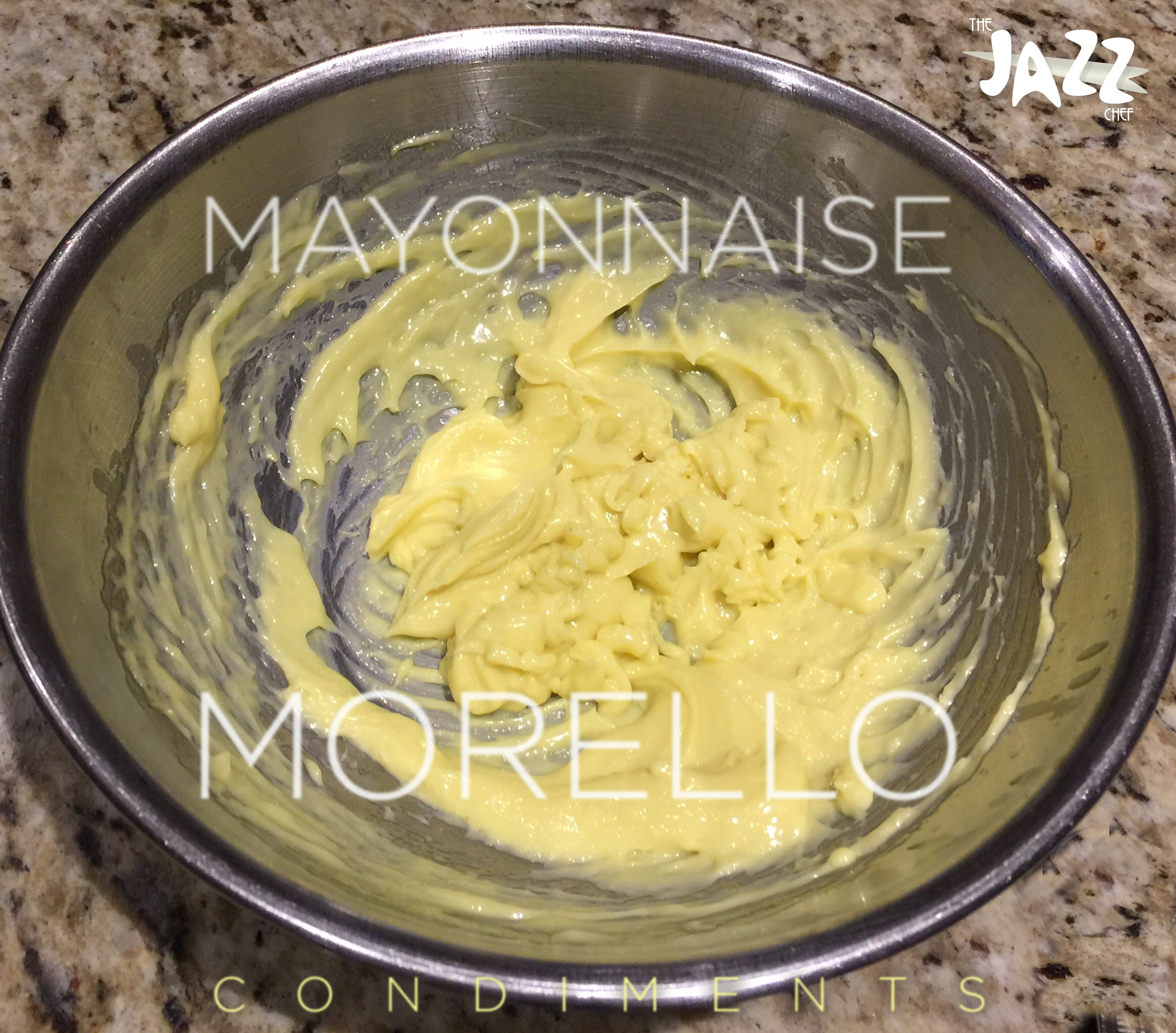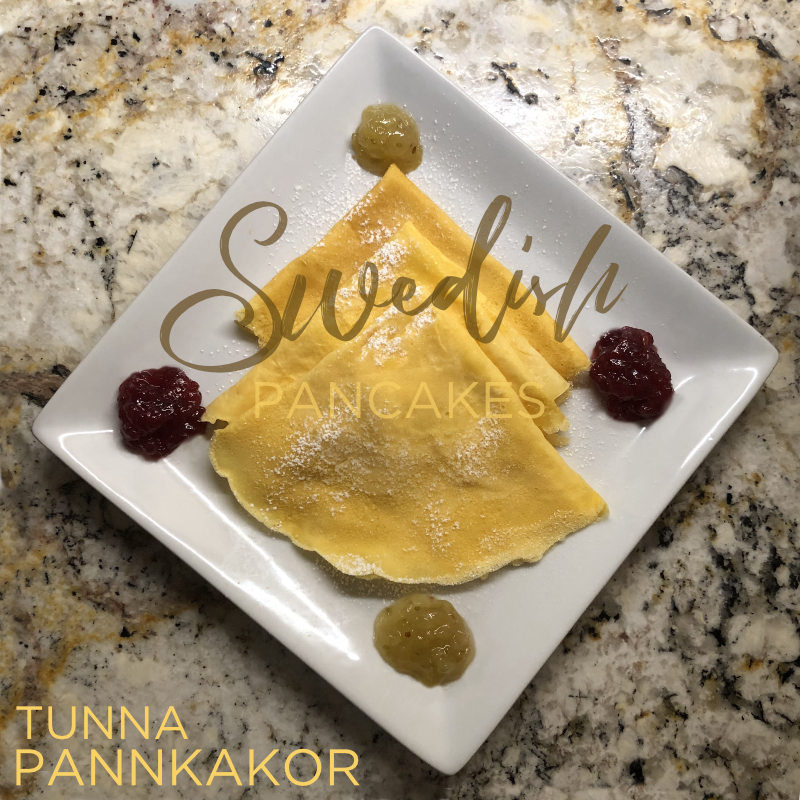My basic mayonnaise recipe is named after the great drummer Joe Morello because, like Joe’s amazing work on the drum kit, keeping great time and a smooth, steady hand is everything in making a memorable mayonnaise.
There are those of you, like me from a few years back, who might think “memorable mayo” is an oxymoron.
I never used to like mayonnaise. NEVAH.
The store-bought varieties, to me, are gross, gooey white stuff that has terrible mouth feel. Probably because, to sit on shelves, they have a lot of stabilizer and preservative in them. It wasn’t until I had fresh mayonnaise, at an artisan sandwich place in Orlando about two years ago, that I really came to appreciate why anyone found this stuff appetizing.
To make things like lobster rolls or crab cakes or select sushi rolls, ain’t nothing like the real thing, baby…
Basically, you are getting a great workout to trap the oil and the other ingredients in the yolk. To do this, you will want to keep whisking small amounts of oil at a time, so I find that using a squirt bottle with a small tip to inject a little oil at a time helps make it even easier to make great mayo.
BIG WORD OF ADVICE: FRESH & QUALITY. It’s a thing in your basic ingredients for mayo. Fresh oil and good quality, fresh eggs make the best mayo. If your finished product has a decidedly egg-heavy taste, then use better eggs on the next pass.
- Oil: I use canola oil for its good health properties, which reminds me to tell you to read my article on canola oil and buy quality, expeller-pressed stuff like The older oil gets, the more of a musty taste it acquires. Safflower too.
- I go with a Vital Farms pasture-raised egg yolk because they’re just bigger and healthier. Mass-produced eggs produce pretty ugly mayo. Expeller-pressed canola oil
With lots of variations that you can try in flavors, once you master the basic blending. Try my recipe, or make a tarragon mayo by adding fresh tarragon in lieu of my herbs de Provence.
You can use a variety of tools to make mayo, but I find that a good sauce whisk really works the surface of the egg best to get the emulsification needed. The good news is, once every few days, after you run out of mayo, you get a killer workout of your arms and upper body from all the whisking, unless you cheat and use your food processor (Follow manufacturer’s instructions), although I’ve done both and honestly the processor version never comes out as well.
Mayonnaise Morello (Basic Mayo):
1 large egg yolk – Vital Farms pasture-raised eggs or equivalent.
1 cup of canola or avocado oil in a plastic squirt bottle with a tight-nosed nozzle.
1 tsp fresh lemon juice – 1/2 lemon
2 tsp white balsamic vinegar
1/4 tsp Fallot Dijon or other wine mustard
1 tsp Herbs de Provence
1 tsp salt
pinch of white pepper
Riffs:
Substitute the herbs de Provençe for:
1 tsp Hung Foy Foods Sriracha OR
1/2 tsp berbere spice mix OR
1 tsp minced fresh tarragon OR
1/2 tsp Badia Foods Saison Tropical OR
1 tsp Peru Chef Basil Paste & 1/2 tsp Black Mint Paste
Substitute oils or blends. Remember to only use oils well within their Best By or Use By dates. Old oil makes cruddy mayo. I mark them up in ratios that are far easier in metric. A 1 to 8 ratio of oil would be say 10ml to 80ml or 1 to 8ml:
1 EVOO to 3 Canola OR
1 White Truffle Oil to 8 Canola/Avocado OR
1 Baklouti Olive Oil to 4 Canola/Avocado OR
1 Tez Mustard Oil to 8 Canola/Avocado OR
1 Coconut Oil to 3 Canola/Avocado
(You may need to whisk or emulsify first before adding to the bottle)
Mise en place:
- Sauce whisk
- Small metal bowl
- Small storage container for egg white
- Lemon juicer
- Plastic food-grade squirt bottle
- Cutting board and knife for lemon and/or herbs
Put your small container and metal bowl near the sink. Rinse off the egg with a little soapy water to reduce the likelihood of bacteria on the shell contaminating the mayo. Dry.
- Separate the egg sushi-style.
- Deposit the yolk into the metal bowl.
- Wash your hands, secure the egg white container and put away in the refrigerator.
- Add all ingredients EXCEPT the canola oil and the water reserve. Have both your squirt bottle and your water pre-measured ready by the side of the metal bowl.
- Mayo is all about the magic of suspending and trapping water and oil and air to form a rich, creamy emulsion. So start by whisking all of the ingredients in the bottom of the bowl until well combined and thick, about 1 min.
- Now add in just a few drops of oil from your squeeze bottle. Too much drowns the emulsion. Keep whisking rapidly around the bowl. You won’t see miracles immediately, but thoroughly emulsifying with the oil you have will begin the chain that creates a sustainable and fluffy mayo. At about 1 min. it will start to stiffen a bit.
- Add a small squirt, a tsp worth or so. Keep whisking. Another tsp. Keep whisking. Slowly you will see the mixture pick up a little body, like a whipped cream. Mini peaks will form and fall. You can add a small squirt of a teaspoon of oil. Integrate. If it looks soupy or starts clumping, keep whisking faster until it returns to full integration before adding more oil. As you go, you can add up to a couple of teaspoons at a time. As you build up mass you can add even a touch more, continuously whisking to build up a thick mayo.
- Once you have a thick mayo, it is best to refrigerate for at least 30 minutes prior to serving to let it fully set up, but you can use it right away on a sandwich or any non-heated application. Store in the refrigerator and use within 10 days, or until separation occurs.
Tips:
- If you get a little thin as you go, you’re adding too much too fast. Keep stirring and don’t add oil until what you have is absorbed and emulsified.
- If you end up with soup, set it aside. Start again, and then, when you have a good strong batch two, drizzle in the “soup” a bit at a time and you can use it to build up more mayo.
- Use right away for recipes, or put into a container and store for up to 10 days. If it starts to separate before that, time to go.
- Remember, mayo is only as good as the ingredients you use. Old oil, or a strong oil like extra virgin olive can radically affect the taste. I use either canola (my preference) or avocado, but any oil will really work. I really dislike the taste of safflower mayonnaise, as it’s abrasive to my palette, so I would discourage it. If I’m doing a pesto mayo, I might use a blend of 1 EVOO to 3 parts canola. All EVOO would be very tough on the palette.







